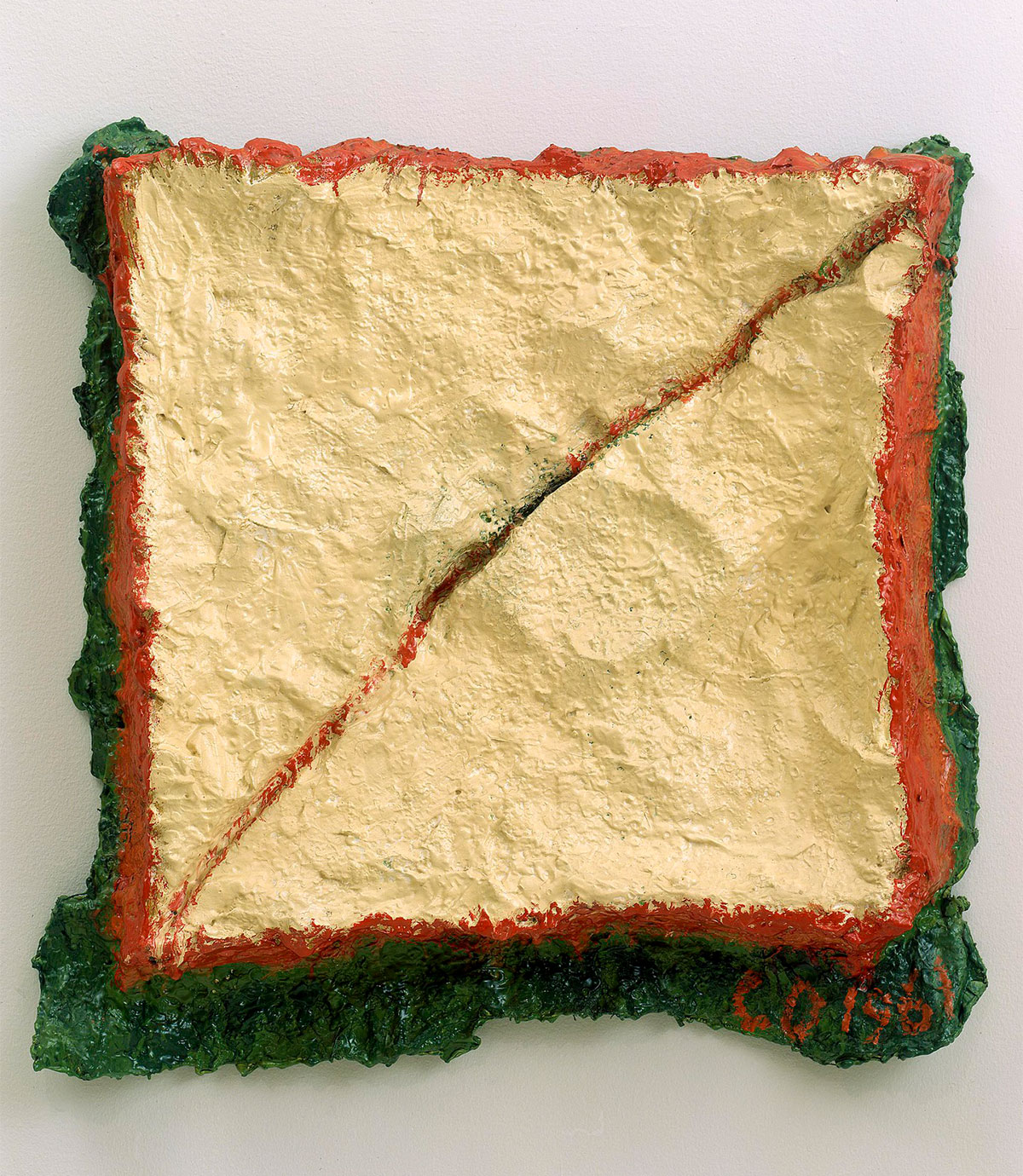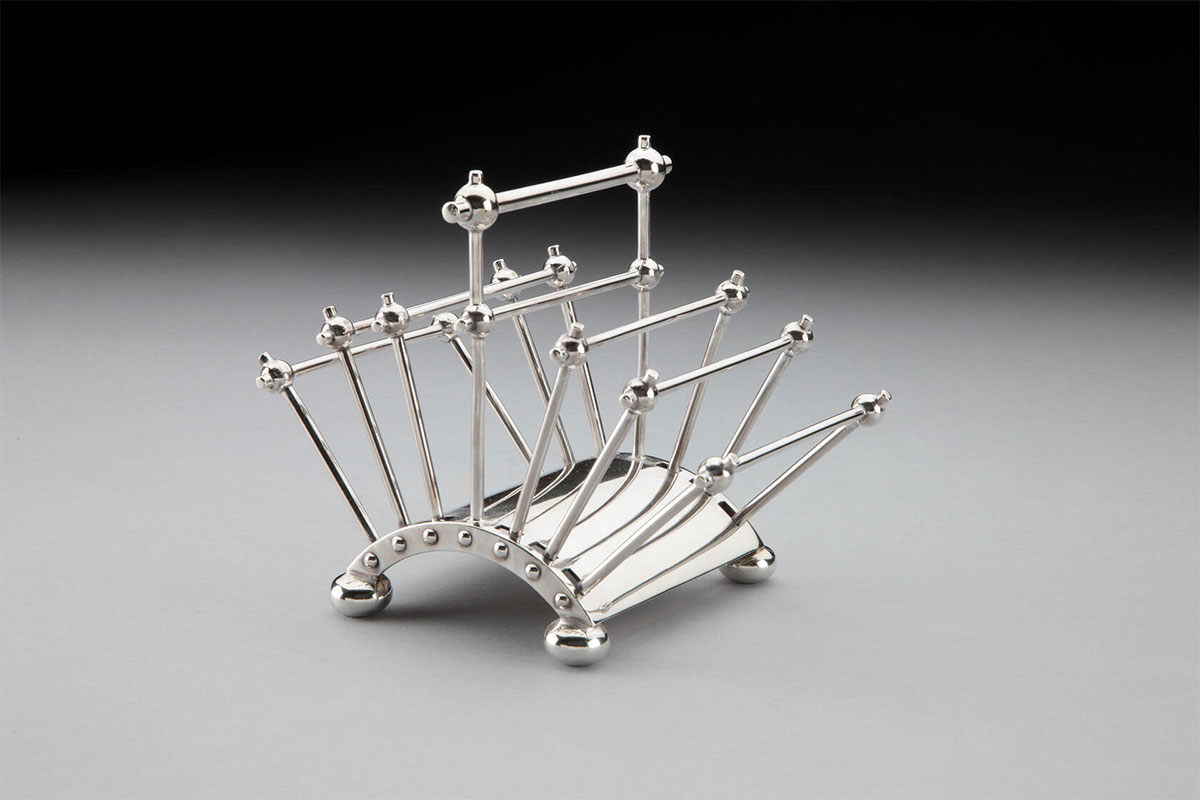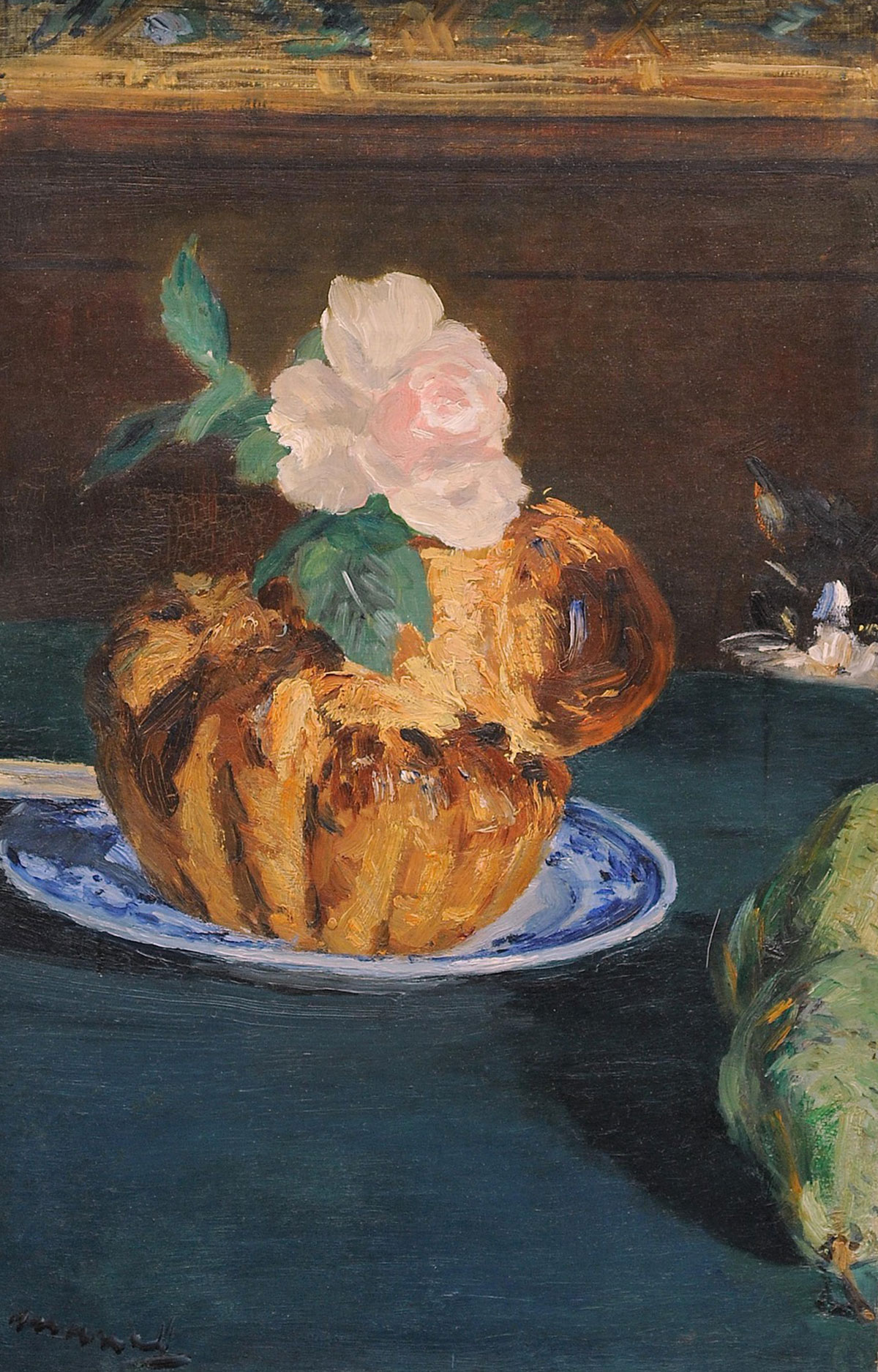To bake or not to bake? Whether you’re mashing bananas for homemade banana bread, cultivating a sourdough starter, or supporting your local neighborhood bakery, this week’s tour is carb-loaded with bread.

In 1961, artist Claes Oldenburg opened a storefront from his studio in Manhattan’s Lower East Side, calling it The Store. Beyond selling giant slices of pie and sculptures of undergarments, this venue—complete with its own business cards and stationery—toyed with America’s celebration of consumerism. Chew on that while you contemplate this sandwich full of leafy greens, which is nearly nine feet square!

When was the last time you remember seeing toast served on anything other than a plate? In the Victorian world of British designer Christopher Dresser, toast was served on trays. Dresser’s minimalist geometric tray is anything but ordinary. Born in Glasglow, Dresser studied design in London and became one of the first product designers to work broadly across various industries. He designed this rack for metals manufacturer Hukin & Heath. Following personal travel to Japan, Dresser’s incorporation of Japanese aesthetics into everyday objects had a huge impact on British design in the 1870s to 1890s, feeding the exotic tastes of the day.

Rethinking that same old loaf of white bread? You are not alone!
The Guerrilla Girls—who call themselves “the conscience of the art world”—formed in 1985 to shed light on the racial and gender inequality that persists within art institutions.
Their cheeky and data-filled posters plastered the walls and storefronts of New York’s gallery district, SoHo, in the late 1980s and 1990s. The group, still active today, has had more than 55 members over the years, each one remaining anonymous and adopting the name of a deceased woman artist.
“Unless all the voices in our culture are in the history of art, it’s not a history of art, it’s a history of power.” —Frida Kahlo, member of Guerrilla Girls

Tired of feeding that sourdough starter? Why not give brioche a try? This slightly sweet and buttery bread made an appearance in five paintings by Édouard Manet.
In the last few years of his life, an ailing Manet painted nearly twenty small-scale still life scenes including Still Life with Brioche, from 1880. The billowing brioche takes center stage in what feels like an oddly cropped fragment of a larger canvas. The skewed perspective is deliberate, as is the seemingly random placement of each element—brioche, plate, pears, and knife.
Manet’s beloved cat Zizi peers mischievously over the table in a scene all too familiar to pet owners. Manet’s modern painterly technique is especially visible in Zizi’s muzzle, which is made of loose yet efficient paint strokes.

Our final stop on this Tour Tuesday is a favorite image from the Teenie Harris Archive, offered by Archive Specialist Charlene Foggie-Barnett, who grew up being photographed by Teenie.
Charlene explains, “One of the constant staples in most human diets is some form of bread. Be it a loaf, muffin, roll, bun, biscuit, roti, tortilla, or matzo, bread is literally the ‘food of life’ for most of the planet. For those with an abundance of food, bread is a supplement to a meal, but when populations suffer food shortages, it often serves as the main portion. This photo was taken in my father’s church in 1959 for several annual congregation food drives I participated in throughout my childhood. Mrs. Brooks (standing, middle) would guide my little hands to properly stack fresh loaves of bread and crackers in baskets with canned goods. I loved the smell of the bread as I tucked it into each parcel. Dad would tell me I was helping other children that didn’t have enough to eat. Later, at our family dinner, Mom would remind me to eat all my food, because others may have none.
“As we shelter in place during this pandemic, we’re watching news coverage of people across the world lining up for donated provisions. Some of my recent dinners have lacked the specific bread that would traditionally accompany the meal, but I’m truly grateful for the food I can provide for my family, and I remember the admonishments of my parents. I’m donating food and financial support to current food drives, but this Teenie Harris photo reminds me of my childhood and the lessons I learned in those moments.”
Think and Do: Write About an Everyday Object
The artists featured in this tour are responding to food, an element of daily life. Think about something else you interact with or consume every day.
How do you use it?
What is your relationship with it?
Choose one of your five senses that interacts with this object. Write a six-word story about how you experience your object through this sense.